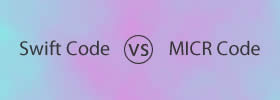Difference between RTGS and IMPS
Key Difference: 'RTGS' stands for Real Time Gross Settlement. It is an online system through which the funds can be transferred from one institution to the other in real time and on ‘gross’ basis. 'IMPS' stands for Immediate Payment Service. It is an inter-bank electronic and instant money transfer service that can be availed on mobile phones.
We often need to transfer the funds from one account to the other. The advent of new technologies had made the task very easy. Looking back, one can easily remember a long queue of people in banks for various purposes. RTGS and IMPS are two importance services that are provided by the banking sector.
IMPS and RTGS are the terms that are used in context to bank transactions. In a broader sense, both these terms are related to the banking sector. Therefore, many times we can get confuse between the two. Therefore, it is important to understand the terms and the differences between them.
 'RTGS' stands for Real Time Gross Settlement. As the name indicates, settlement in RTGS is done on a real time. It is an online system through which the funds can be transferred from one institution to the other. Banks are important institutions that use this kind of settlement. This electronic payment system is normally controlled by the central bank of a country. This involves no physical exchange of money but the values in the electronic accounts are changed.
'RTGS' stands for Real Time Gross Settlement. As the name indicates, settlement in RTGS is done on a real time. It is an online system through which the funds can be transferred from one institution to the other. Banks are important institutions that use this kind of settlement. This electronic payment system is normally controlled by the central bank of a country. This involves no physical exchange of money but the values in the electronic accounts are changed.
All transactions sent through RTGS are queued and submitted on the basis of ‘First in first out’. RTGS enabled banks can also prioritize the transactions according to the requirement. Transactions are settled on one to one basis without clubbing with other transaction. Transactions between banks are settled on a continuous gross basis (on a transaction by transaction basis) with the Central Bank.
In RTGS, the transactions are processed continuously. Therefore, the transfers are quick and very useful during emergencies. It is a real time processing system thus, there is no waiting time attached with this system. It also helps in giving a clear picture of the accounts at any instance. The World Bank also offers help to countries who want to implement the system. RTGS systems are generally secure as they are designed by keeping the international standards in mind. Goals of RTGS:
1. To reduce settlement risk due to settlement lag
2. To reduce credit risk
3. Speed up the process of high value payments
4. To give accurate position of the participating bank
‘IMPS’ is an effective method of payment that is done by using the mobile phones. Mobile phones had revolutionized many sectors and the banks have been also affected  massively with this device. The world seems to be at our finger tips. Using the benefits of mobile phones, the banks have simplified ways for payments of various bills and this service can be used to transfer funds. IMPS facilitate customers to used mobile phones as a medium to access their bank accounts.
massively with this device. The world seems to be at our finger tips. Using the benefits of mobile phones, the banks have simplified ways for payments of various bills and this service can be used to transfer funds. IMPS facilitate customers to used mobile phones as a medium to access their bank accounts.
National Payments Corporation of India launched IMPS in the country on 22 November, 2010. IMPS thus, is mainly referred in terms of a service that was introduced in India. Therefore, the details in this article will mainly consider this specific payment service of India. To avail the service, the customers simply need to register with their IMPS enabled banks, and the IMPS enabled banks provide a seven digit mobile identifier number (MMID) and mobile banking identification number (MPIN). The customers can easily download and activate the mobile banking applications. Now, a sender has to just key in the beneficiary’s mobile number, his MMID, the amount and MPIN.
After the processing, the sender receives a SMS confirming the success of transaction. The beneficiary customer must have registered his mobile number with the bank where he maintains his account and where he intends to receive the credit. Apart from this, the receiver must have a valid MMID provided by the bank. IMPS service follows 24 hour cycle with 11 PM cut-off while inter-bank settlement is done on next working day. IMPS can be used for sending and receiving money, paying utility bills, internet shopping, booking travel tickets, etc. An IMPS is packed with various advantages like:
- It is used for instant money transfer
- It does not require the internet connection
- Disclosure of bank account details is not required
Some of the details have been mentioned in the table. The differences are made on the basis of the RTGS and IMPS implemented in India.
|
|
RTGS |
IMPS |
|
Definition |
Transactions are processed and settled in real time and on gross level |
Transactions are processed and settled in batches, typically at the end of the day. |
|
Money Transfer System |
destination bank has to credit the beneficiary’s amount within two hours |
instant |
|
Charges |
a) Inward transactions – Free, no charge to be levied. b) Outward transactions – - For transactions of INR2 lakhs to INR5 lakhs – INR 5 per transaction plus applicable Time Varying Charges (INR1/- to INR5/-); total not exceeding INR30 per transaction, (+ Service Tax). - Above INR5 lakhs – INR50 per transaction plus applicable Time Varying Charges (INR1/- to INR5/-); total charges not exceeding INR55 per transaction, (+ Service Tax). No time varying charges are applicable for RTGS transactions settled up to 12:30 hrs. (Source: Wikipedia) |
Generally, there are no charges for sending or receiving funds using IMPS. |
|
Amount |
Minimum is fixed at a certain amount No maximum limit |
No minimum or maximum stipulation of amount. |
|
Time Consumption |
Comparatively slow |
Instant |
|
Unsuccessful transactions |
The funds will be returned immediately for unsuccessful transactions. It may take few hours. |
The funds will be returned immediately for unsuccessful transactions. |
|
Important date |
Introduced in India since March 2004 |
National Payments Corporation of India launched IMPS in the country on 22 November, 2010 |
|
Timings |
Business hours of Bank |
Can be sent and received at any time |
|
Holiday restrictions |
Yes |
No |
|
Limit |
Minimum is fixed at a certain amount No maximum limit |
Subjected to a daily cap of Rupees 50,000/- per customer with an overall calendar month limit of Rupees 2,50,000.00 overall through mobile. Transactions up to Rupees. 1000/- with an overall calendar monthly limit of Rupees 5000/-can be facilitated by banks without end-to-end encryption |
Image Courtesy: kanyakabank.in, projectsjugaad.com









Add new comment